I am a relative newcomer when it comes to the fitness band scene. While I reviewed one almost two years ago, I didn’t find myself using it after the review was finished. Last summer I picked up my first all around fitness band and I have been using it ever since. The Adidas Micoach Fit Smart seemed very similar to my current band, but what peaked my curiosity was the sports-specific workouts tailored to your fitness level. With tennis season coming up, I had to give it a try.
DON’T MISS: Pivotal Living Bluetooth smart scale and fitness band review
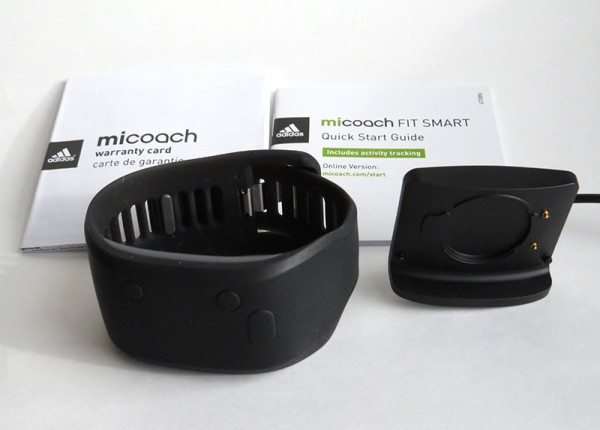
In the box you’ll find the band, charger, warranty card, and quick start guide. Setting it up was really simple. I made sure to charge it up all the way, set the time, and then scrolled to the Bluetooth icon on the Fit Smart band. My phone found and paired to it quickly.
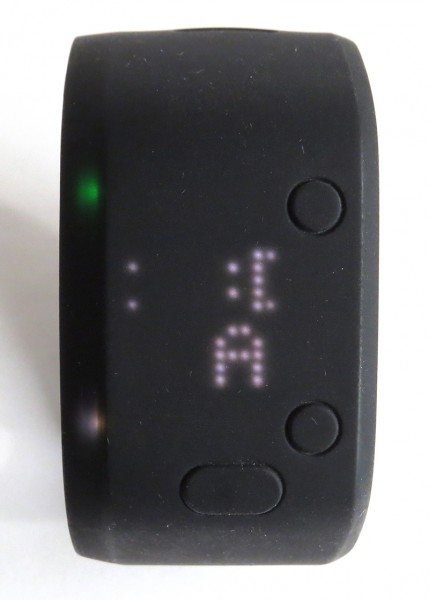
The front of the band has three buttons. Pressing the bottom button will wake the watch and show the time. If you continue to press the bottom button while the time is shown, it will scroll through your steps, calories, and distance for the day. The two buttons on the right side are for scrolling through the main navigation, where you’ll find your workout for the day, two workout categories (run and gym), heart rate, Bluetooth, and the battery indicator. To select one of these categories, you press the bottom button.
A disclaimer for pictures of the display: While you don’t see it this way with the naked eye, when taking a picture, the display is very much like an old monitor. This is why the pictures using my big camera show up oddly, like above. It does not look this way otherwise!
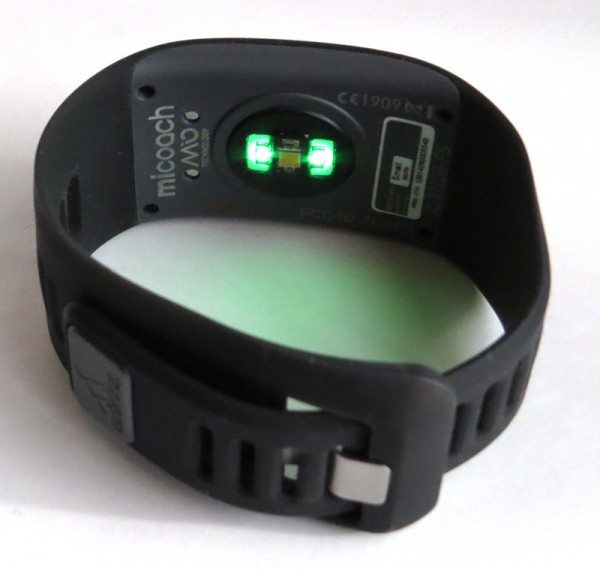
On the backside of the fitness band, there is a heart rate sensor that activates either when you select ‘heart rate’ or when you are in a workout. I’m still torn on whether or not I prefer it constantly on, or by choice. The battery life on the Adidas Fit Smart is quite a bit better than my Fitbit Charge HR, and I believe having the heart rate going only when you need it is a reason for that.
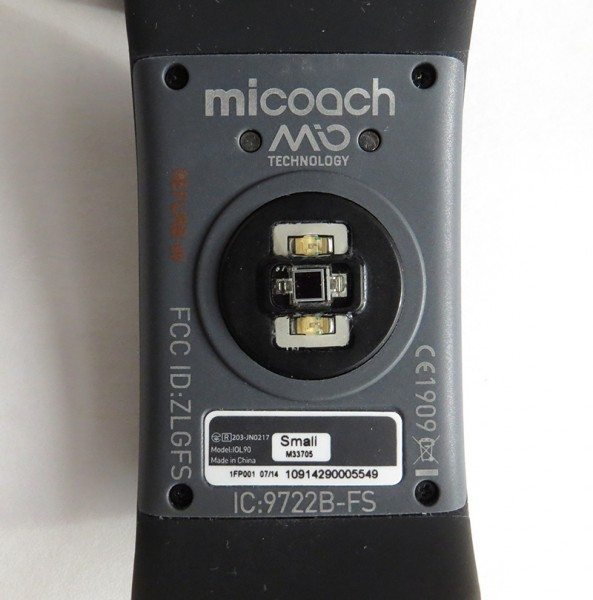
There are two little dots in the picture above, right under the Micoach lettering. If you line these up with the two dots on the charger, it will magnetically snap into place. It works really well and I wish the Fitbit’s charger was this easy.
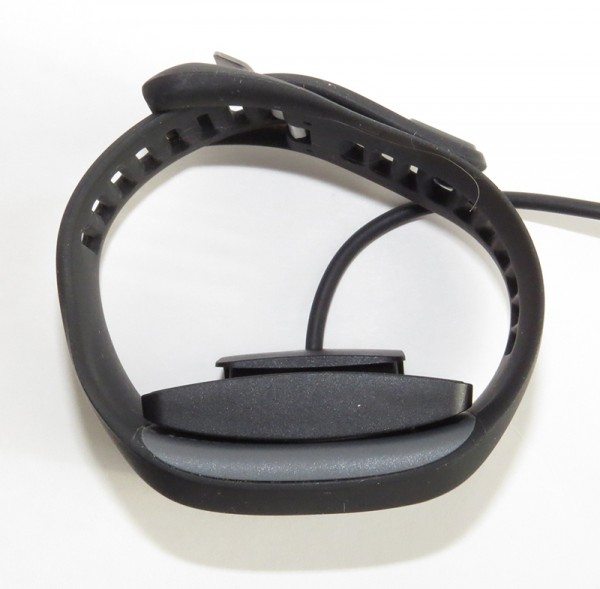
When charging, it is connected well enough that you can hold the Fit Smart by the charging cable, so you shouldn’t have to worry about it coming apart mid-charge. In the above picture, you can also see the many holes for choosing the right fit for the band. I was sent the small, and I run about four holes from the smallest. It is just a hair too small for my husband, who doesn’t come close to fitting the small sized Fitbit.
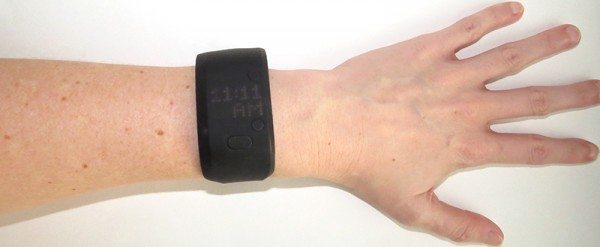
The first thing I noticed when I put the Fit Smart on was how big it looked on my wrist. I have thin wrists, so it is amplified by that fact, but wow, it’s big. Of course, the display is also bigger, which makes it much easier to read than the Fitbit. Despite looking big on my wrist, it is more comfortable to wear than the Fitbit. I did not expect that at all. It did like to slide around on my wrist more, but the heart rate sensor seemed to work even though it moved around.
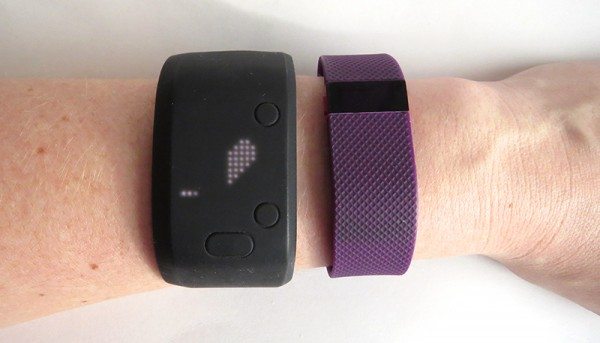
Above, you can see the size difference between the Adidas Micoach Fit Smart (left) and the Fitbit Charge HR (right). Not only is there a physical size difference, but you can also see the display difference. The display on the Fit Smart shows it looking for my heart rate. If you were looking at the display with your naked eye, and not through a camera lens, you’d see a full heart shown.
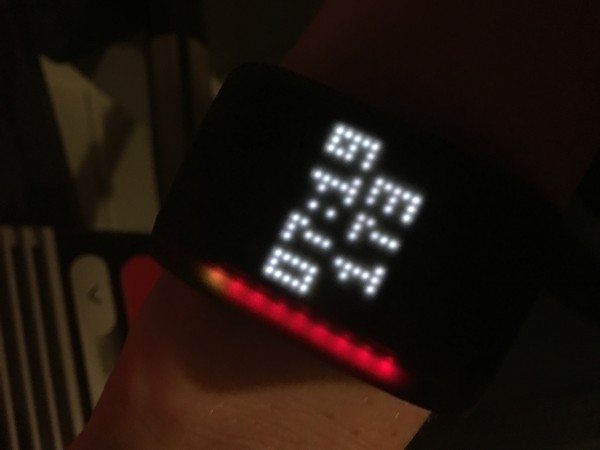
First, I have to apologize for the quality of the above picture. Taking a photo with my phone, mid-workout, right after the peak of my workout to show the color on the left side was truly difficult. The red bar on the left side changes color based on what heart rate zone you are in during your workout. Starting with the lowest zone, you’ll see it blue, green, yellow, or red. When you are not in a workout, the bar will fill up with white dots to show how far along you are in your chosen daily goal; example being 5,000 steps.
During your workout, the top number is the time you’ve worked out so far and the bottom number is your heart rate. This goes hand in hand with the Adidas train and run app, which I will go over next. The app is not necessary after you’ve put in your training plan. You can start the next workout in your activity via the Fit Smart if you choose.
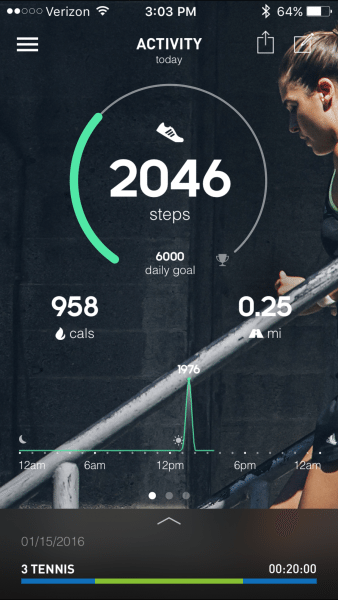
Adidas’s train and run app, to me, is what really makes the Fit Smart shine. To get started, you need to do an evaluation workout. This will measure your speed walking up to your most intense running heart rate. Using this information, it will calculate your four heart rate zones. Remember those colors I talked about above? This is where those come into play. As you can see in the picture above, I am on the third tennis workout (3 tennis) that is 20 minutes long, and goes from a brisk walk (blue), to a jog (green), and back down to blue again. The Fit Smart will vibrate when you are about to change intensity levels. If you choose not to look at your phone, the Fit Smart will let you know if you need to raise or lower your intensity to match the desired heart rate. Also, the Fit Smart will show you what level you are currently in by lighting up that side bar with the color matching your heart rate zone. This means you can run around a track or your neighborhood without getting your phone out. Nifty, huh?
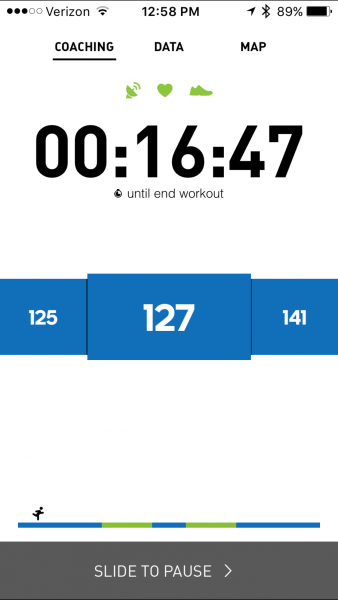
This is what a workout consists of on the app. It’s pretty simple, but I like simple. My current heart rate (during the workout) is shown in the middle, and the min and max are on the left and right sides. Because it goes up to 141, I considered the blue zone to be a speed walk, because simply walking would never get my heart rate that high unless I was walking up a mountain!
As you go through the workouts, they progressively get harder and harder. Each training plan is eight weeks long, and I can see that by the eighth week, the workouts will be much harder than what I have right now.
There are also strength training workouts to go along with the cardio workouts. They require actual weight equipment, so a gym is most likely necessary for the strength training. Since I have no gym, I couldn’t test this part of the workout.
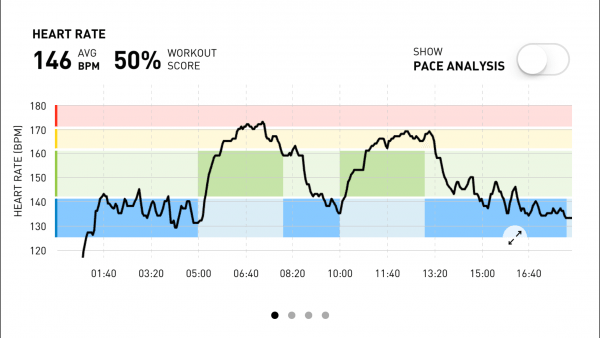
After your workout, you are given a graph with your heart rate. The graph above is the result of the workout shown in the previous picture. You can see where I tried to get my heart rate into the zones. It will take several more workouts before I can figure out what the right speed setting on the treadmill needs to be, but I thought I did a pretty good job in the above workout at mimicking the workout zones.
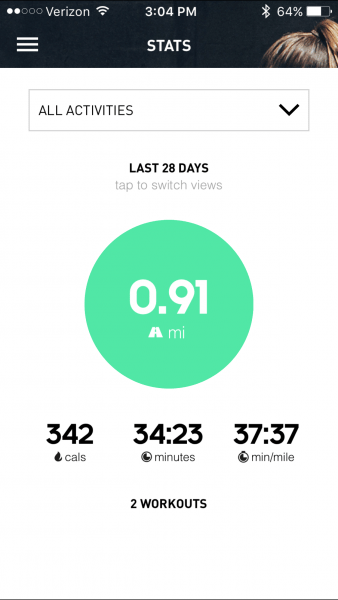
There is a stats screen as well that shows you your totals for the last seven days, the last 28 days, and all time. One thing I noticed right away was the distance was way off. I definitely was not walking at a 37 minute mile pace during my workouts! This was one of two things that seemed to be off. The other bit of inconsistency I found was with the step count. When wearing it around all day, it would show half as many steps taken as the Fitbit. Upon further testing, it was definitely not registering steps at random times. What was odd though, is that when I was running on the treadmill, it would be within a few steps of the Fitbit. I think it really wants your arms to sway quite a bit to register the steps.
I tried to do a lot of comparing between the Fitbit Charge HR and the Adidas Micoach Fit Smart because they seemed so similar. Because of this, I was able to conclude that the Charge HR seemed good for the average person tracking basic fitness, while the Fit Smart seemed to be great for people focused on working out. If you just want to use it to walk around the neighborhood, track your steps, and see your heart rate, then I would say look elsewhere. But, if you are someone who wants to set goals and have guided workouts, then the Adidas Micoach Fit Smart may be a good fit for you.
Source: The sample for this review was provided by Adidas. Please visit their site for more information and Amazon to order one.

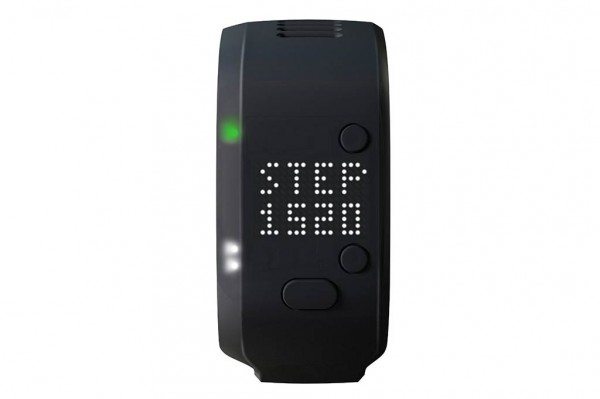


Gadgeteer Comment Policy - Please read before commenting
I have the adidas micoach fit smart for 15 months now. It was a gift and a small size body was ok for my wrist.
I agree that the fit has good battery but it has many disadvantages that you have not pointed out and I understand it because not every reviewer can do all tests.
Problems:
1. The LEDs are not bright enough for the summer sun. So you will not be able to read the display in direct sun light.
2. The program does buzz for notification to change the rhythm or decrease the HR or change the interval but it won’t stick around so if you are running at good speed, say 6 min to a mile or 3.30 min for a km. Then by the time you realise the buzz (which at higher HR is feeble) and try to read the display/reason. It will be all gone.
3. After every 3 months the band will stretch and for me in 1 year I have reached the top slot.
4. The HR monitor is finicky and might not pick up the rate (I have resting HR of 55bpm) and also if your wrist is not wet. It somehow needs a good sweaty wrist to record. If it rains (in London) then it goes out of whack.
5. The battery was good initially but the degradation is troubling. 15 months and I am now searching forums to find if I can replace the battery.
6. The software upgrade might be the reason for the watch was going strong before the display began to flicker and suddenly the battery has died.